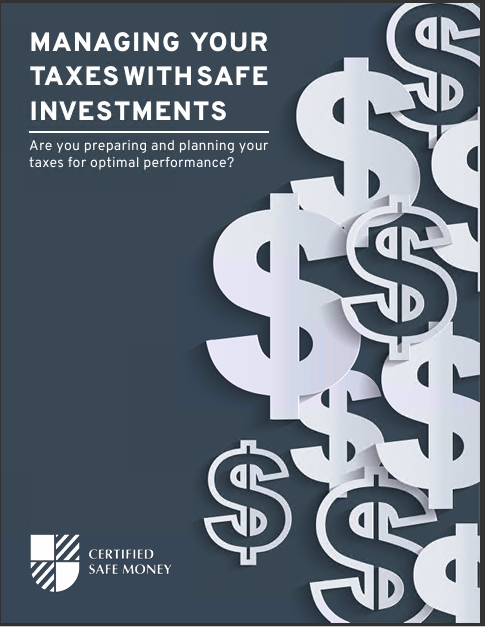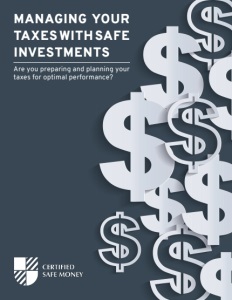Key Takeaways
-
Fixed annuities offer guaranteed returns, making them ideal for safe retirement planning.
-
Always compare factors like interest rates, fees, surrender periods, and insurer ratings before choosing a fixed annuity.
Understanding Fixed Annuities: A Quick Refresher
If you’re planning for retirement, you’ve probably heard about fixed annuities. They’re becoming increasingly popular, especially in today’s uncertain economic climate. But what exactly makes them a valuable choice?
A fixed annuity is essentially a contract between you and an insurance company. You pay them a lump sum (or multiple payments), and in return, they promise you a guaranteed income stream for a specific duration or even for life. Unlike other investments that fluctuate with market conditions, fixed annuities provide predictability and stability.
But not all fixed annuities are created equal. Here’s how you can spot the best ones for your retirement goals.
The Secret Sauce: High Interest Rates and Low Fees
Interest Rates: Your Money’s Best Friend
The first thing you’ll want to look at when selecting a fixed annuity is the interest rate. Typically, fixed annuities offer rates ranging from around 3% to 6%, though this can vary significantly based on market conditions. In 2025, competitive fixed annuities usually offer closer to the higher end of this range.
-
Pro Tip: Compare at least five different fixed annuity options before making your choice.
-
Keep in mind the interest rate guarantees—some annuities lock rates for just 1-3 years, while others offer longer durations of 5-10 years.
Low Fees Mean More Money for You
Every financial product comes with costs, but the best fixed annuities minimize fees. Watch out for:
-
Surrender charges: Penalties if you withdraw early, typically decreasing each year over 5-10 years.
-
Administrative fees: Annual fees for account maintenance (the best products waive these entirely).
When evaluating an annuity, ask specifically about these fees and request clear documentation.
Know the Insurer: Reputation Matters
Selecting the right annuity isn’t just about numbers—it’s also about trust. The insurance company behind your annuity needs to be stable and reputable. A company’s financial health directly impacts your investment’s safety.
Financial Strength Ratings
Major rating agencies like AM Best, Moody’s, and Standard & Poor’s rate insurance companies based on their financial stability. Aim for companies rated ‘A’ or higher to ensure peace of mind.
History of Stability
Long-term reliability matters. Choose insurers with decades of stable performance, especially those who’ve weathered past economic downturns.
Decide Your Payout Preferences
Fixed annuities offer various payout options tailored to different retirement goals. Carefully evaluate each to find the right fit.
Immediate vs. Deferred Annuities
-
Immediate Annuities: Start paying within 12 months of your lump-sum payment. Ideal if you’re retiring soon or already retired.
-
Deferred Annuities: Payments begin at a later date (e.g., 5-20 years from now), allowing your money to accumulate interest tax-deferred.
Lifetime Payments vs. Fixed Period
-
Lifetime: Guaranteed income for as long as you live. Ideal if you’re concerned about outliving your savings.
-
Fixed Period: Payments guaranteed only for a predetermined period (like 10, 20, or 30 years).
Consider your life expectancy, financial needs, and retirement timeline carefully before selecting your payout preference.
Examine the Fine Print: Understanding Surrender Periods
All fixed annuities come with surrender periods. This timeframe, usually between 5 and 10 years, imposes penalties if you withdraw funds prematurely.
-
Shorter surrender periods (around 3-5 years) usually have lower interest rates.
-
Longer surrender periods (up to 10 years) may offer higher rates, but your money is tied up longer.
Penalty-Free Withdrawals
Many annuities permit penalty-free withdrawals of up to 10% annually during the surrender period. Confirm this before choosing a plan—it can offer valuable flexibility.
Inflation Protection: Don’t Let Inflation Erode Your Returns
One downside of fixed annuities is potential vulnerability to inflation. Inflation decreases purchasing power, especially over long retirement periods (20-30 years).
To combat this:
-
Choose annuities with cost-of-living adjustments (COLAs) that periodically increase payments.
-
Consider combining fixed annuities with other inflation-resistant investments to balance your portfolio.
Tax Considerations: Maximize Your Returns
Understanding the tax implications of fixed annuities helps you avoid unexpected tax burdens:
-
Your earnings grow tax-deferred until you withdraw them.
-
Withdrawals before age 59½ may incur a 10% IRS penalty.
-
Plan withdrawals strategically to minimize taxes by aligning with your income needs and overall tax bracket.
Annuity Riders: Customizing Your Investment
Annuity riders are optional features that enhance your annuity contract. Some beneficial riders include:
-
Long-term care rider: Provides financial support if you need long-term care services.
-
Death benefit rider: Ensures your beneficiaries receive remaining funds if you pass away early.
-
Inflation protection rider: Guarantees regular increases in your payout.
These riders typically come at an additional cost, so evaluate carefully to ensure they’re necessary for your situation.
How Much Should You Invest in Fixed Annuities?
While fixed annuities provide stable returns, they shouldn’t be your only retirement strategy. Financial experts usually recommend allocating around 20% to 40% of your retirement portfolio to safe investments like fixed annuities. This provides stability without sacrificing potential growth opportunities from other asset classes.
Balancing Risk: Fixed Annuities vs. Alternatives
Evaluate how fixed annuities compare to other retirement-safe investment alternatives:
-
Certificates of Deposit (CDs): FDIC-insured and typically shorter terms, but often lower returns.
-
Government Bonds: Stable but typically offer lower returns compared to annuities.
-
Treasury Inflation-Protected Securities (TIPS): Adjusted for inflation but lower yields.
Consider your risk tolerance, timeline, and desired returns when weighing these options.
Timing Your Annuity Purchase: Is Now the Right Time?
In 2025, market volatility and rising interest rates make fixed annuities particularly attractive. High-interest rate environments can lock in favorable returns. However, keep these points in mind:
-
If rates are currently rising, shorter-term annuities might be preferable so you can reinvest at potentially higher rates in a few years.
-
If rates appear to peak, consider locking in a longer-term rate.
Regularly monitor market conditions and consult financial experts to time your investment optimally.
Building a Robust Retirement Portfolio
Your retirement savings should never rely on just one asset class. Fixed annuities form a stable foundation, but diversifying with stocks, mutual funds, and real estate ensures you maximize returns and protect against inflation and market downturns.
Aim for:
-
40% fixed annuities and bonds
-
40% equities and mutual funds
-
20% alternative investments (real estate, commodities)
Adjust these percentages based on your risk tolerance and timeline.
Making the Decision: Your Next Steps
Identifying the right fixed annuity is simpler when you know precisely what to look for:
-
Compare interest rates, fees, and insurer ratings.
-
Clarify payout terms and options.
-
Evaluate surrender periods and penalty-free withdrawals.
-
Consider beneficial riders.
Investing some time upfront ensures you pick an annuity aligned with your long-term goals.
Smart Choices for a Secure Retirement
Choosing the best fixed annuity requires understanding your financial goals, analyzing options carefully, and matching the product features with your specific retirement needs. The best fixed annuity can offer security and peace of mind in uncertain economic times.













